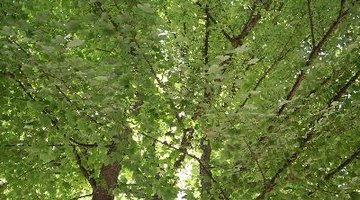How Well Does Maple Wood Burn?
From heating your home to creating the perfect campfire for telling ghost stories, it helps to know how to best burn wood for a fire. There are thousands of types of trees, and the individual characteristics of each one determines how they burn. Maple burns relatively well, due to a number of factors.

Wood Density
The density of wood is a key deciding factor in how it will burn. If you've ever heard the terms “hardwood” and “softwood,” you know it's not the texture but the density to which these terms refer. Hardwood species give off more heat when burned, producing a better fire. In contrast, softwood burns faster, but it absorbs a lot of moisture, so it either will not stay lit or will burn so quickly that you receive no real heat or value from the fire.
Maple Density
Both of the most common types of maple — the red maple and sugar maple — are relatively high-density types of wood, meaning that they are hardwoods. Sugar maple is the more dense of the two choices. This means that sugar maple is one of the best types of wood for burning, while red maple is close behind in the burning scale.
Compared with Other Woods
Sugar maple ranks among the best woods for burning, accompanied by other hardwoods, including red oak, beech, yew, ash, walnut and dogwood. These are the densest types of wood available. Red maple is slightly less dense, ranking it in the category medium density or medium woods, such as holly, juniper, elm, cedar and a variety of pine trees. The lowest density or softest woods are essentially a waste of time to try to burn. These woods include white pines, cottonwood, black willows, hemlocks, redwoods and spruce trees.
Burn Better Maple
The optimal maple wood for burning is wood that was cut at least six months before burning. The wood must be stored in a dry, elevated area to allow the excess moisture to run out. Freshly cut wood, green wood or wood that was recently exposed to moisture will take a long time to catch or may not catch at all. It will also produce excessive smoke as the moisture boils away. If you cut the wood yourself, make sure you split it into smaller logs before you store it. This creates more open surface area from which the moisture can evaporate. It also increases air flow to facilitate drying. Finally, split wood is more likely to safely fit in your fireplace or campfire ring.
References
Writer Bio
Samantha Volz has been involved in journalistic and informative writing for over eight years. She holds a bachelor's degree in English literature from Lycoming College, Williamsport, Pennsylvania, with a minor in European history. In college she was editor-in-chief of the student newspaper and completed a professional internship with the "Williamsport Sun-Gazette," serving as a full-time reporter. She resides in Horsham, Pennsylvania.
Photo Credits
- leafy maple tree image by Joy Prescott from Fotolia.com
- leafy maple tree image by Joy Prescott from Fotolia.com
More Articles



